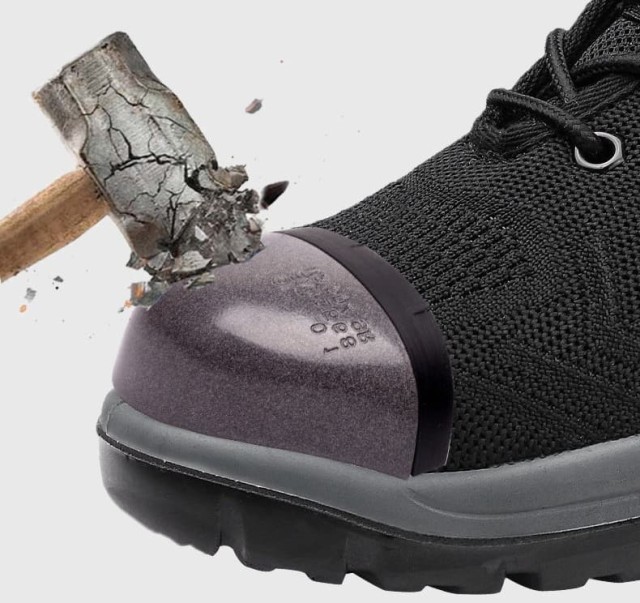Every workplace has unique hazards, and selecting the right safety toe isn’t just about compliance—it’s about balancing protection, comfort, and job-specific needs. Whether you’re navigating heavy machinery, electrical hazards, or extreme temperatures, the wrong toe type can compromise safety or productivity. Here’s how to match your footwear to your work environment.
Safety Toe Essentials for Workplace Protection
Material Properties and Safety Standards
Safety toes must meet ASTM F2413 standards for impact and compression resistance. Key differences lie in their materials:
- Steel toes: Highest durability against crushing forces, but conduct heat/cold and electricity.
- Composite toes: Non-metallic (often fiberglass or carbon fiber), lighter, and insulate against temperature and electrical currents.
- Alloy toes: Balance steel’s strength with reduced weight, though marginally heavier than composites.
- Soft toes: No protective structure; only suitable for low-risk environments.
Research shows steel toes dominate heavy industries (e.g., construction), while composites are preferred for electrical work or cold storage.
Industry-Specific Recommendations
- Construction/Manufacturing: Steel or alloy toes for heavy-object protection.
- Electrical Utilities: Composite toes to prevent conductivity.
- Airport Security/Warehouses: Composite toes to avoid metal detector triggers.
- Food Processing: Stainless steel or composite for chemical/water resistance.
Comparing Safety Toe Options
Protection Level vs. Weight
| Toe Type | Impact Resistance | Weight (Relative) |
|---|---|---|
| Steel | Highest | Heaviest |
| Alloy | High | Moderate |
| Composite | Medium-High | Lightest |
| Soft | None | Minimal |
Trade-off: Steel offers uncompromising protection but may cause fatigue over long shifts. Composite toes reduce strain but wear faster in abrasive conditions.
Electrical Hazard Resistance
Composite and alloy toes are non-conductive, critical for electricians or utility workers. Steel toes can pose electrocution risks near live wires.
Temperature Tolerance
- Cold Environments: Composite toes insulate better than metal options.
- High Heat: Steel toes retain heat; composites resist thermal transfer.
Decision-Making Guide
Key Questions for Selecting Toe Type
- What hazards dominate your workplace? (e.g., crushing, punctures, electricity)
- How much mobility do you need? Lightweight composites suit active roles like emergency response.
- Are there temperature extremes? Metal toes exacerbate discomfort in freezing/heat.
Cost vs. Longevity Trade-offs
- Steel/alloy toes: Lower upfront cost, longer lifespan.
- Composite toes: Higher initial price, but reduce fatigue-related injuries.
Upgrade Your Safety Footwear with 3515
As a trusted manufacturer for distributors and bulk clients, 3515 delivers tailored safety footwear combining compliance, comfort, and durability. Whether you need steel toes for industrial durability or lightweight composites for agile work, our range adapts to your workforce’s demands. [Contact 3515] to explore scalable solutions that protect your team without compromising performance.
Have you evaluated how your current safety toes align with evolving workplace risks?
Products You Might Be Looking For:
Explore durable steel toe work shoes
Related Products
- Wholesale Durable Breathable Safety Boots Custom OEM Manufacturer
- Customizable Anti-Smash Safety Boots for Wholesale & Private Label Manufacturing
- Athletic Safety Shoes with Dial Closure & Steel Toe for Wholesale & Custom Manufacturing
- Wholesale Mesh Steel Toe Safety Shoes with Dial Closure Factory Production
- Safety Footwear Wholesale Manufacturer for Custom OEM/ODM Production
Related Articles
- Steel Toe vs. Composite Toe Boots: How to Choose the Right Safety Footwear for Your Job
- How to Prevent Foot Discomfort Without Sacrificing Safety in Steel Toe Boots
- How Safety Standards for Steel Toe Boots Protect Workers Beyond Impact Resistance
- Steel Toe Work Boots: Balancing Safety and Comfort for Demanding Jobs
- Steel Toe Boots vs. Modern Alternatives: Making the Right Safety Choice



















